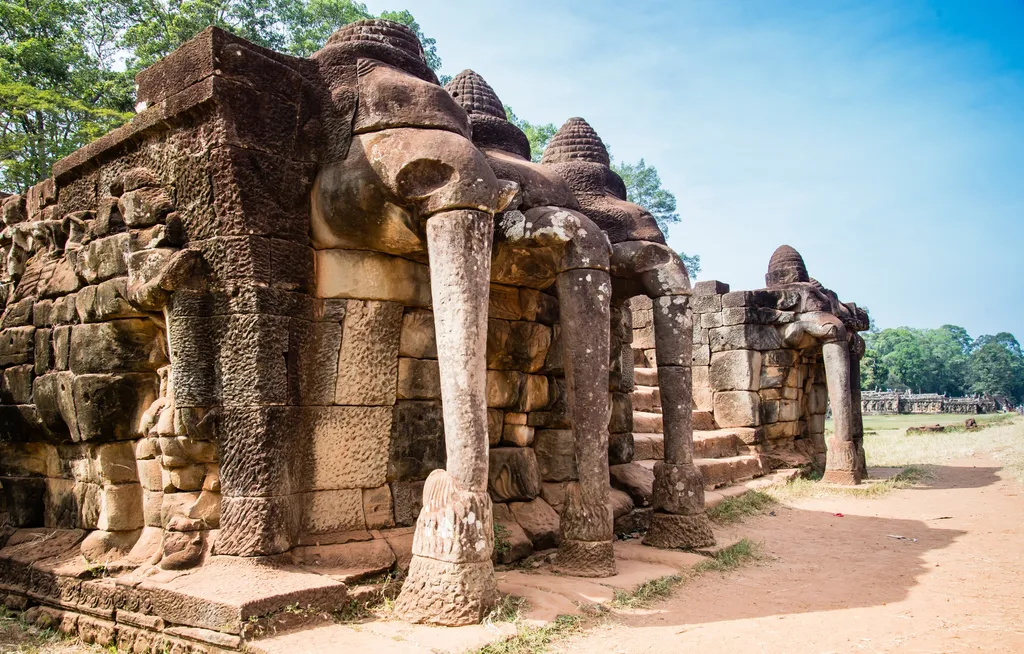In the heart of Siem Reap, Cambodia, a groundbreaking archaeological project is reshaping how we understand and preserve ancient structures. Led by M. Koo from Hanyang University Museum in Seoul, South Korea, the study focuses on the Elephant Terrace in Angkor Thom, a site that has long captivated historians and archaeologists alike. The research, published in *The International Archives of the Photogrammetry, Remote Sensing and Spatial Information Sciences* (translated as *The International Archives of Photogrammetry, Remote Sensing and Spatial Information Sciences*), is not just about uncovering the past; it’s about revolutionizing the way we document and interpret it.
The Elephant Terrace, a monumental structure dating back to the Khmer Empire, has undergone various restoration efforts over the years. However, previous work by the École française d’Extrême-Orient (EFEO) primarily focused on surface-level repairs. Koo’s team took a different approach, dismantling and excavating a 14-meter section of the northern terrace to delve into its internal structure and construction sequence. This meticulous process involved capturing 705 terrestrial and aerial images, which were then processed using Agisoft Metashape Professional to create a high-resolution 3D model.
The accuracy of this model was rigorously evaluated using Ground Control Points (GCPs) and Check Points (CPs), resulting in a Root Mean Square Error (RMSE) of 3.21 cm and an average reprojection error of 0.438 pixels. These figures are well within the acceptable thresholds for archaeological documentation, ensuring the reliability of the data.
One of the most significant aspects of this study is the integration of photogrammetric data acquisition during the excavation process. This approach eliminates the need for a separate imaging campaign, making the method highly practical for field documentation. “This integrated approach not only saves time but also enhances the accuracy of our findings,” Koo explained. “It allows us to capture detailed data in real-time, providing a more comprehensive understanding of the site.”
The resulting 3D model enabled the team to reconstruct five major construction phases of the Elephant Terrace, revealing the use of compacted earth, laterite walls, and sandstone facings. This detailed reconstruction offers invaluable insights into the construction techniques and materials used by the Khmer Empire, shedding light on their architectural prowess and engineering skills.
The implications of this research extend beyond the realm of archaeology. In the energy sector, for instance, the use of photogrammetry and 3D reconstruction can significantly enhance the monitoring and maintenance of infrastructure. By creating detailed 3D models of energy facilities, companies can identify potential issues before they escalate, ensuring the safety and efficiency of their operations.
Moreover, the integration of photogrammetric data acquisition during the excavation process sets a new standard for field documentation. This approach can be applied to various industries, from construction to environmental monitoring, where real-time data capture is crucial for informed decision-making.
As we look to the future, the potential of photogrammetry and 3D reconstruction in archaeological research is immense. “This technology allows us to preserve and interpret heritage structures with unprecedented accuracy,” Koo noted. “It opens up new avenues for research and education, making our cultural heritage more accessible to the public.”
In conclusion, the study led by M. Koo from Hanyang University Museum is a testament to the power of photogrammetry and 3D reconstruction in archaeological research. By integrating data acquisition during the excavation process, the team has not only enhanced the accuracy of their findings but also set a new standard for field documentation. The implications of this research are far-reaching, offering valuable insights for the energy sector and beyond. As we continue to explore the potential of these technologies, we can look forward to a future where our understanding of the past is both deeper and more accessible.

